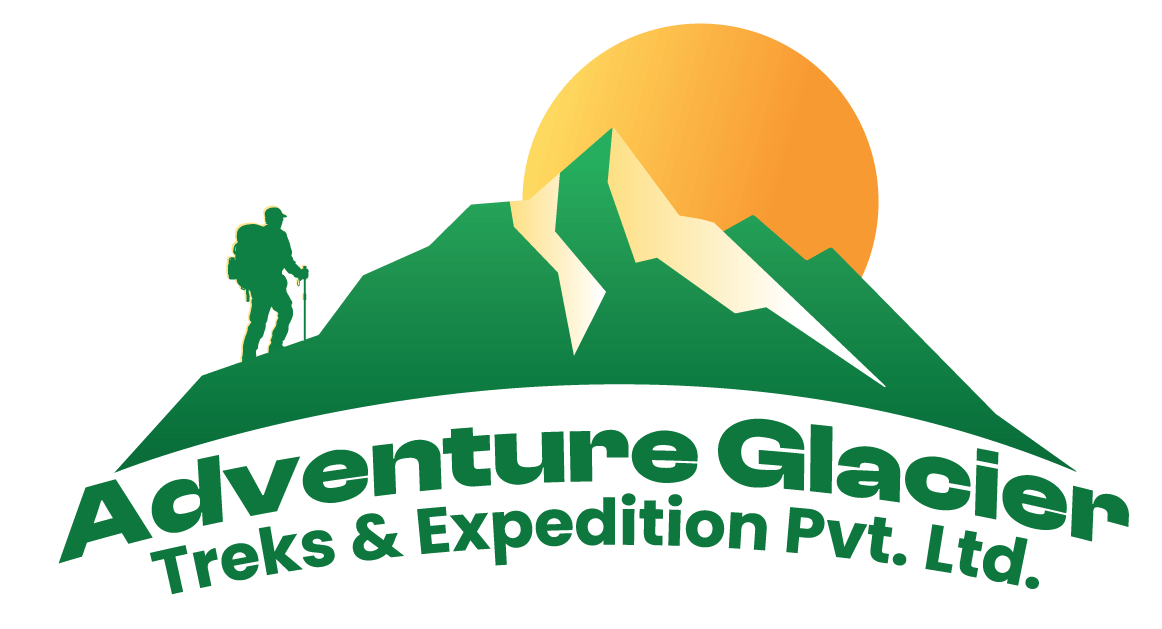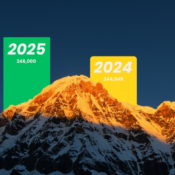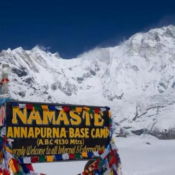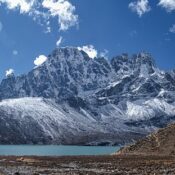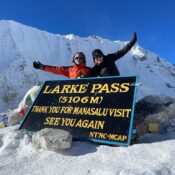Updated Everest Permit Fees for 2025/26
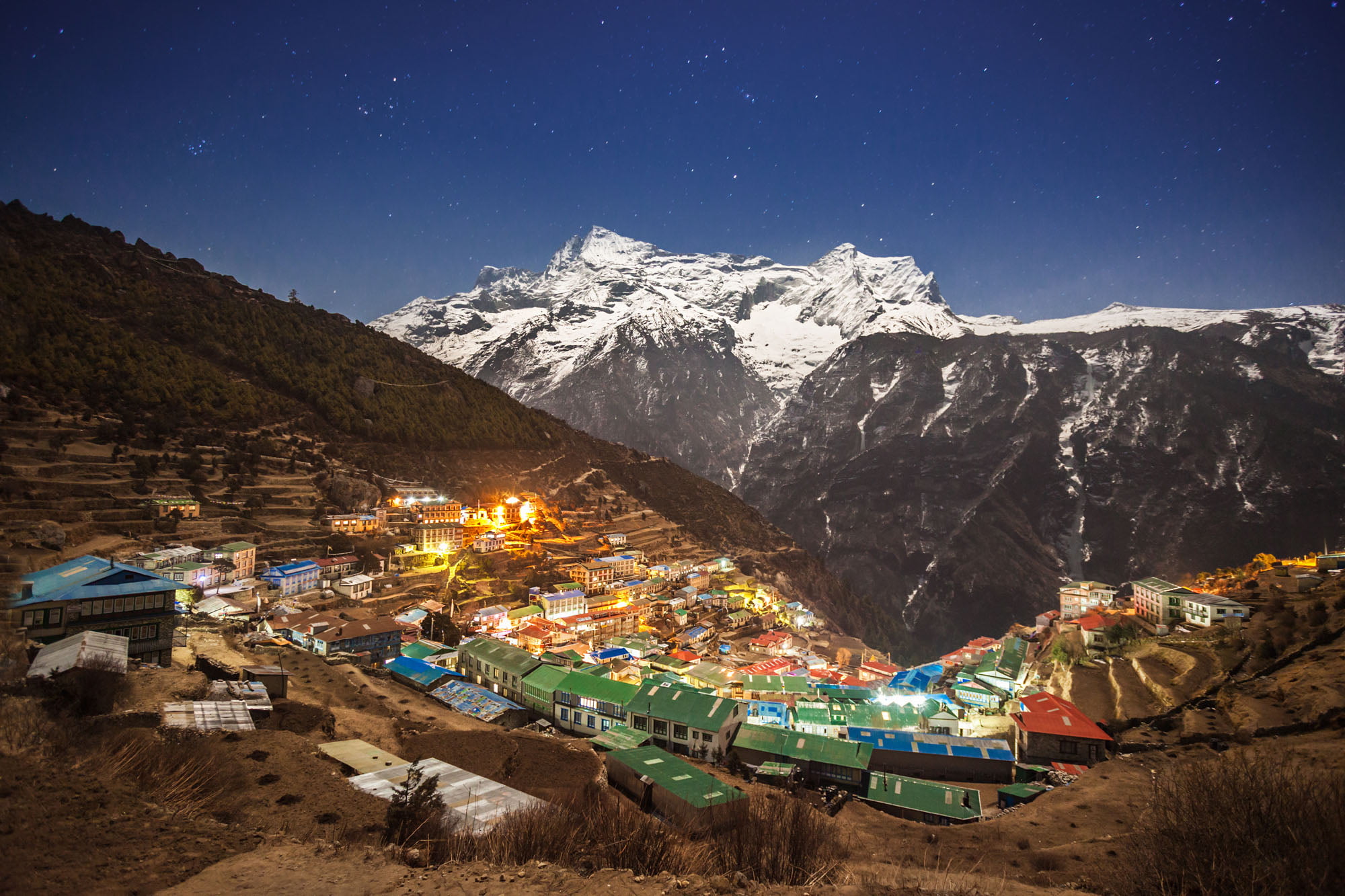
For many adventurers, standing on the top of Mount Everest is a lifelong dream. But from the 2025/26 climbing season, the cost of making that dream come true has officially changed. Nepal has revised the permit fees for Everest base camp, and anyone planning an expedition now needs to factor these new prices into their budget. The updated permit fees are not just about raising revenue, they’re also part of a bigger plan to improve safety, protect the mountain environment, and ensure that expeditions are run in a more responsible way. The government wants the money collected from permits to directly support rescue operations, waste management, and stricter climbing standards.
In this updated guide, you’ll get a clear idea of what the new fee system looks like, how much climbers from different regions will need to pay, and why the cost has been increased. We’ll also cover how these changes connect to new rules for climbers, such as experience requirements and the need for licensed guides. By the end, you’ll know exactly what the Everest permit will cost in 2025/26 and what that means for your overall expedition expenses. This way, you can plan ahead with the latest information and understand how Nepal is shaping the future of Everest climbing.
Previous changes
Back in 2015, Nepal’s Ministry of Culture, Tourism & Civil Aviation made a big change to how climbers were charged for Mount Everest permits. Before this revision, the system worked in two ways: climbers usually joined a group of seven, where the total fee was $70,000. That came out to $10,000 per person, which was the standard option most people chose. On the other hand, if someone wanted to climb solo, they had to pay an enormous fee of $25,000 just for themselves. In 2015, the government decided to simplify things by introducing a flat fee of $11,000 per climber. This meant that it didn’t matter whether someone climbed solo or joined a team, the permit cost was the same for everyone.
Officials described this move as a “price decrease” because the solo fee dropped significantly, from $25,000 down to $11,000. But in reality, very few climbers had ever paid the solo fee. Most people went in groups, where the cost had been $10,000 per person. So for the majority of climbers, the new system actually made Everest more expensive, raising their costs by $1,000 each. The 2015 change was important because it created a simpler and more uniform structure for Everest permits. However, it also showed how pricing decisions can affect climbers differently depending on their situation. While it looked like a discount on paper, most Everest aspirants ended up paying more to follow their dream of reaching the world’s highest peak.
Fees in China last increased in 2019
In 2019, China raised the cost of climbing Mount Everest from the Northside and introduced new rules for permits. One of the biggest changes was the removal of the option for solo climbers to pay less than $20,000. Now, every climber must be part of a team with at least four members. For those who don’t have a team, it’s not a huge issue, since many guides allow individuals to join their group for a small extra fee, even if the support is minimal. Currently, an Everest permit from the Chinese side costs between $15,800 and $18,000 per person when joining a group of four or more. This price usually includes transportation from the entry point in China, hotels, a liaison officer, trash management, and yak services for carrying gear. Staying in Lhasa adds another $200 per day per person. If you want to hire a Sherpa from Nepal, there’s an extra $4,500 for a work permit plus about $5,000 for their salary.
Rescue services in Tibet work differently compared to Nepal. All rescues are handled by a central team, and since there are no fixed prices, the costs can quickly rise. Helicopter rescues are still not allowed, though there are talks they might be introduced in the future. That’s why climbers are advised to double-check insurance details with their expedition company. The higher fees also mean Everest is becoming more expensive. If costs are passed down by climbing companies, the minimum price of an expedition could easily reach $40,000 or more, which is challenging for younger climbers without sponsors. This could result in fewer climbers from countries like China and India and more older climbers from wealthier nations such as Japan, the US, and Europe.
For 2025, this shift may actually create a different kind of opportunity. While permits are pricier, fewer climbers on the mountain could mean less crowding and a more peaceful climbing experience. For those dreaming of Everest, it might be a chance to experience the world’s highest peak with more space and quiet than usual.
Will the Cost of Mount Everest Climbing Increase in 2025/2026?
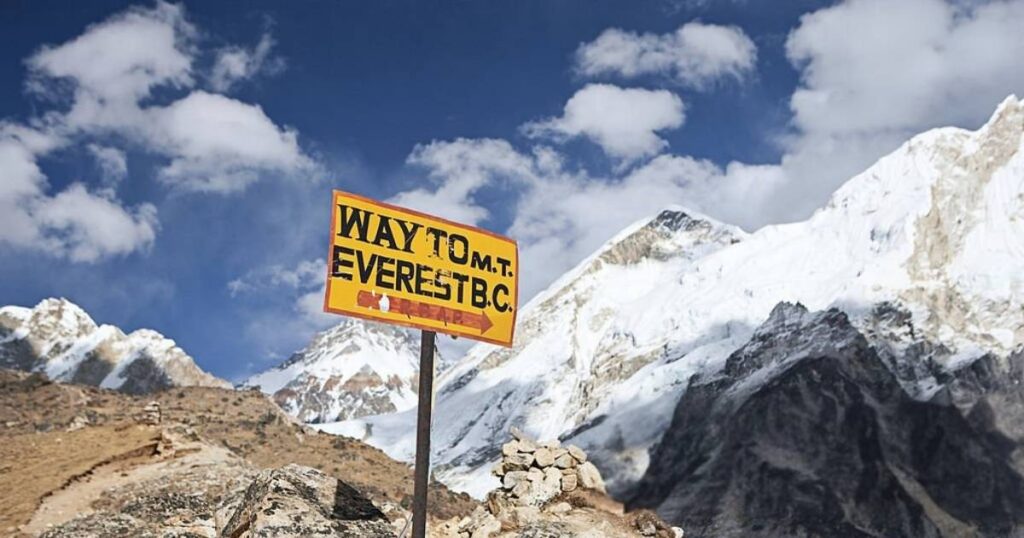
Climbing Mount Everest has always been costly, but prices in 2025 show just how much the expenses keep rising. According to ExpedReview, the average cost of an Everest expedition in 2025/26 is about $58,069, while the general average across all trips comes to around $50,000. If we leave out private and luxury expeditions, the average is lower at $52,448, with a median price of $49,500. Looking back, the trend is easy to see. In 2022, climbers paid an average of $54,972, while in 2021, the average was $54,044. The median costs in those years were $46,995 and $46,498. This means in just a short gap of one year, the price of a single expedition increased by about $4,000 to $5,000.
The steady rise comes from several factors. Permit fees have gone up, inflation adds pressure, and government taxes and logistics like flights, yaks, gear, food, and guide wages all cost more every season. With Everest’s popularity growing, the demand also pushes prices higher. As we move into 2025 and 2026, climbers should expect expenses to keep increasing. For most, that means planning ahead and preparing a bigger budget if they want to take on the world’s tallest mountain.
Changes in Mount Everest Climbing Fees Over Time: Old vs New
Effective from 1st September, 2025, the Nepalese government has made important changes to Everest climbing permits in recent years. For a long time, the fees stayed the same, but with the rise in climbers and the growing need to protect the mountain environment, the system has been updated. These changes affect both foreign climbers and Nepali citizens, and they highlight how the cost of climbing Everest has steadily gone up.
| Mountain / Altitude | Previous Fees (Spring) | Updated Fees (Spring) | Previous Fees (Autumn) | Updated Fees (Autumn) | Previous Fees (Winter/Summer) | Updated Fees (Winter/Summer) |
| Mt.Everest (Normal Route) | $11,000 | $15,000 | $5,500 | $7,500 | $2,750 | $3,750 |
| Mt.Everest (Other Route) | $7,000 | $10,000 | $3,500 | $5,000 | $1,750 | $2,500 |
| Other Mountains Above 8000m | $2,000 | $3,000 | $1,000 | $1, 500 | $500 | $750 |
| Manaslu | $1,000 | $1,500 | $2,000 | $3,000 | $1000 | $1,500 |
| 7501m – 8000m | $700 | $1,000 | $350 | $500 | $175 | $250 |
| 7001m – 7500m | $600 | $800 | $300 | $400 | $150 | $200 |
| 6501m – 7000m | $400 | $500 | $200 | $250 | $100 | $200 |
| Mt.Ama Dablam (6812m) | $800 | $1,000 | $800 | $1,000 | $400 | $500 |
| Less than 6500m | $250 | $350 | $125 | $175 | $125 | $175 |
How much will it cost for Nepali citizens?
The government has also revised the climbing fees for Nepali citizens, making some notable changes across different mountains and seasons. These adjustments aim to balance demand between peak and off-peak seasons while ensuring fair contributions from Nepali climbers across different mountain ranges.
| Mountain / Route | Spring Season | Autumn Season | Winter / Summer |
| Everest(Normal Route) | Rs 150,000 | Rs 75,000 | Rs 37,500 |
| Everest(Other Routes) | Rs 100,000 | Rs 50,000 | Rs 25,000 |
| OtherMountains (8000m+) | Rs 50,000 | Rs 25,000 | Rs 12,500 |
| Peaks7501m– 7999m | Rs 40,000 | Rs 20,000 | Rs 10,000 |
Why Climbing Permits in Nepal Are More Expensive Now
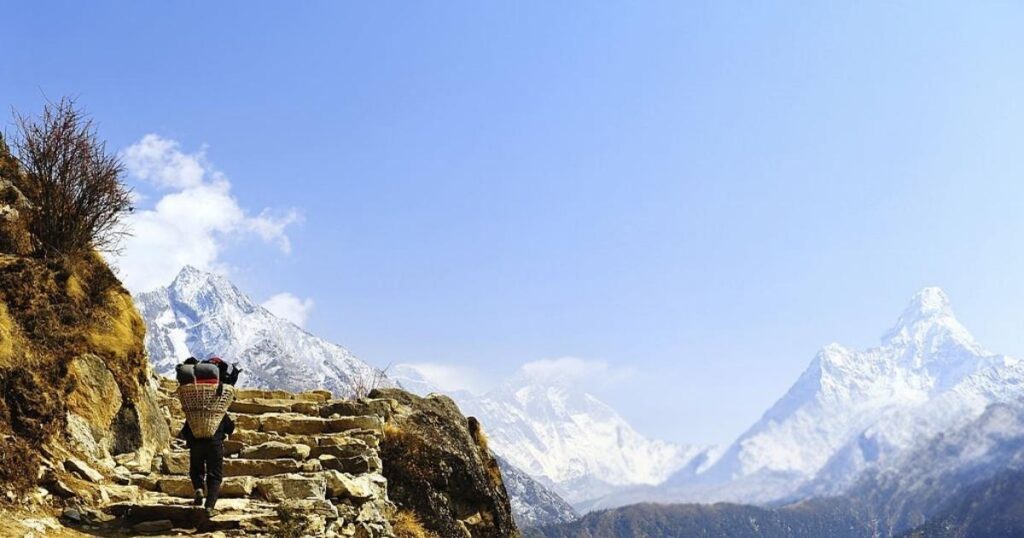
The main reason Nepal has raised mountain climbing fees is to address the challenges that come with more climbers on the peaks. Everest, standing at 8,848 meters (29,029 feet), is one of the world’s most famous but also one of the most dangerous mountains. With the growing number of expeditions, problems like overcrowding, pollution, and waste left on the mountain have become serious concerns. Managing rescues at such high altitudes and ensuring climbers’ safety is also getting more complicated and expensive. These additional charges are meant to help with important areas like:
- Improving Safety: The extra fees are used to make climbing safer. This includes hiring more trained guides, improving communication and monitoring systems, and making rescue operations faster and more effective. These measures help climbers get better support on the mountain and reduce risks during emergencies at high altitudes.
- Protecting the Environment: Fees also go toward protecting Everest’s environment. They fund garbage cleanup, proper waste disposal, and programs to preserve the fragile mountain ecosystem. By ensuring climbers follow strict rules, these measures help reduce pollution and maintain the natural beauty of the Himalayas for future generations of adventurers.
- Supporting Local Communities: The additional money supports people living near Everest. It can be used to improve roads, facilities, and healthcare services, as well as to help local businesses that rely on tourism. These funds strengthen the communities around the mountain while ensuring they benefit directly from climbing activities and visitors.
Will the New Cost of Permit affect Peak Climbing in Nepal
Many mountaineers and trekking agencies believe that the recent increase in peak climbing permit fees will affect popular peaks under 6,500 meters. Peaks like Island Peak, Mera Peak, Lobuche Peak, and Chulu Far East are well-known among national and international climbers. Every year, these peaks attract thousands of climbers and trekkers, providing jobs for guides, porters, and local communities, as well as income for the country. With higher permit costs, some climbers may reconsider their plans, which could reduce bookings and affect local tourism.
The cost of climbing in Nepal has already increased in recent years due to higher flight fares, rising logistics costs, and local permits. Trekking and expedition companies are concerned that the new peak climbing permit fees may add another financial burden. For many climbers, especially those with limited budgets, this could make smaller peaks less affordable, leading them to choose lower-cost alternatives or cancel trips.
While higher fees are intended to improve safety, environmental protection, and local development, the immediate impact may be fewer climbers on popular trekking peaks. This could affect local jobs and businesses that rely on tourism, such as lodges, restaurants, and equipment rentals. In the long term, agencies hope that careful planning and promotion of sustainable tourism will balance the higher costs. If managed well, Nepal can continue attracting climbers while ensuring the mountains and local communities benefit responsibly.
Impact on Climbers and the Tourism Industry
Nepal has increased Everest permit fees at a time when climbing the mountain is becoming more popular. The higher cost is likely to reduce the number of climbers because not everyone can afford it. Most climbers agree that extra money is needed for safety and protecting the environment, but the increase may make Everest harder to reach for many people. Higher fees could promote better and more sustainable tourism. Fewer climbers but better-prepared teams may make climbing Everest safer, cleaner, and a more meaningful experience for everyone. Here’s the list why this will impact on climbers and tourism industry:
- Fewer Climbers Overall: The $15,000 permit fee makes Everest less affordable, especially for first-time climbers or those with smaller budgets.
- Higher Total Costs: Beyond permits, expenses for travel, gear, food, lodging, and Sherpa support push the cost above $50,000, limiting who can attempt the climb.
- Reduced Overcrowding: With fewer climbers, traffic jams and dangerous delays on the route may decrease, improving safety.
- More Prepared Teams: Higher fees may encourage climbers to train better, hire proper guides, and follow regulations more seriously.
- Support for Local Economy: Wealthier climbers who can afford the fees often spend more on trekking agencies, guides, and local communities.
- Environmental Benefits: With fewer but better-organized expeditions, waste management and eco-friendly practices are easier to maintain.
- Government Goal: Nepal hopes these rules balance safety, sustainability, and revenue, keeping Everest respected as a world-class climbing destination.
Does this affect the Everest’s Future
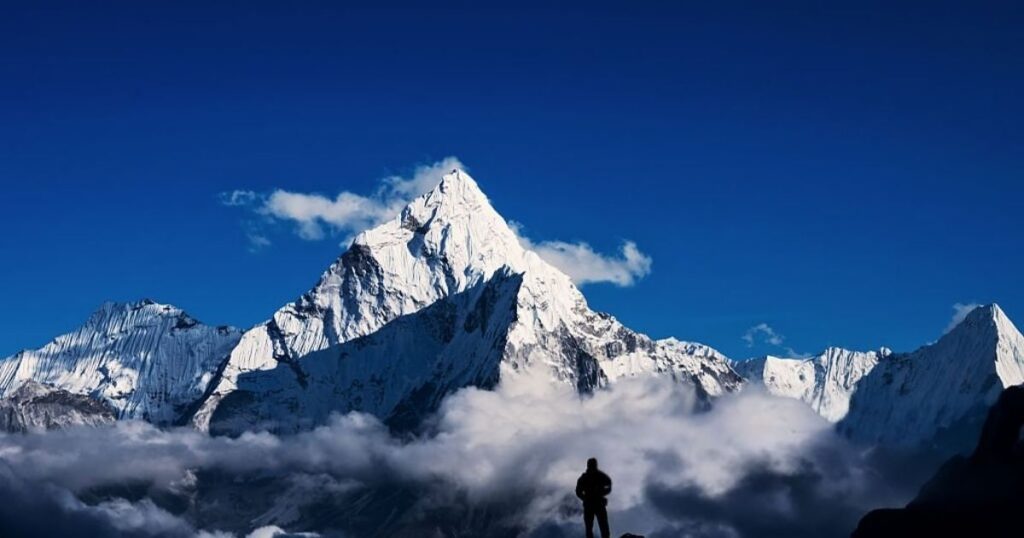
The discussion about the future of climbing Mount Everest is getting stronger. Many people are asking whether the current approach of letting large numbers of climbers attempt the mountain is safe or sustainable. The recent increase in permit fees is part of this bigger conversation. Nepal wants to balance the economic benefits from tourism with the need to protect the mountain, keep climbers safe, and preserve its natural beauty. Experts say that just raising fees is not enough. They suggest additional measures such as limiting the number of permits issued each season, providing better training for climbers, and improving waste management on the mountain. Overcrowding has become a serious problem during peak climbing seasons, causing dangerous delays in key sections. These bottlenecks can increase the risk of accidents and even fatalities.
The Nepalese government is currently relying on the higher permit fees to help manage the number of climbers. While this may reduce the total number of people on Everest, it is unclear if it will fully solve issues like overcrowding, safety risks, and environmental damage. Some mountaineering groups and environmentalists are calling for a more comprehensive plan. This could include stricter rules for climbers, better support services, and long-term strategies for keeping the mountain clean and safe. The debate shows that Everest’s future will require careful planning. The goal is to create a safer, cleaner, and more sustainable climbing experience, while still allowing climbers from around the world to achieve their dream of reaching the world’s highest peak.
Why Choose Adventure Glacier Treks for 2025
If you are planning a trek or peak climb in Nepal in 2025 or 2026, we at Adventure Glacier Treks are here to make your adventure safe, smooth, and memorable. With years of experience, we guide trekkers on popular routes like Everest Base Camp, Annapurna Circuit, Langtang Valley, and climbing peaks like Island Peak or Mera Peak. We understand that the permit fees have recently increased, and this can make planning more important. With us, your journey is safe, enjoyable, and meaningful, giving you a full Himalayan experience while making the most of your time, budget, and energy on the trail. Here are the reasons why you should choose Adventure Glacier Treks:
- Expert Guidance: Licensed and experienced guides ensure your safety while sharing knowledge about local culture, traditions, and the Himalayan environment.
- Updated Cost Management: We help you plan with the latest permit fees and expenses, so there are no surprises during your trip.
- Customized Itineraries: Treks and climbs are designed around your fitness, time, and interests for a personalized adventure.
- Popular Routes and Peaks: From Everest Base Camp and Annapurna Circuit to Island Peak and Mera Peak, we cover Nepal’s most famous journeys.
- Cultural Experience: You get to explore Sherpa culture, ancient monasteries, and traditional mountain villages along the way.
- Eco-Friendly Practices: We follow sustainable trekking methods and waste management to keep the mountains clean.
- Safe and Enjoyable Journeys: Every detail, from logistics to acclimatization, is carefully managed so you can focus on enjoying the adventure.
Conclusion
Mount Everest is not just the tallest mountain in the world; it is also a symbol of adventure, determination, and the human spirit. Over the years, climbing Everest has become more popular than ever, attracting thousands of climbers from around the globe. With this rising popularity, however, challenges such as overcrowding, environmental damage, and safety concerns have grown, prompting the Nepalese government to revise climbing permit fees and regulations. The new permit fees are designed to address multiple issues. They aim to improve safety by funding better-trained guides, enhanced communication systems, and more reliable rescue operations. They also focus on protecting the environment through waste management initiatives and stricter rules for climbers. Additionally, a portion of the fees goes to support local communities by improving infrastructure, healthcare, and livelihoods that depend on tourism.
While these changes may make Everest expeditions more expensive, they also encourage a more responsible and sustainable approach to climbing. Fewer climbers on the mountain mean less overcrowding, a cleaner environment, and a safer experience for everyone. It also helps local businesses earn more per expedition, creating long-term benefits for the communities around Everest. For aspiring climbers, careful planning and budgeting are now more important than ever. Understanding the updated fees, safety requirements, and environmental responsibilities will help ensure a smoother and more successful expedition. The goal is to make climbing Everest safer, cleaner, and more meaningful for future generations, while preserving the mountain’s beauty and spirit for everyone to enjoy.
FAQs Updated Everest Permit Fees for 2025/26
How much will it cost to climb Everest in 2025?
Climbing Everest in 2025 can cost around $50,000 to $60,000 per person for a standard expedition. This includes the permit fee, guides and sherpas, equipment, oxygen, food, and accommodation. Costs may vary depending on the trekking company, type of package, and whether you choose a private or group expedition. Extra fees for flights, insurance, and personal gear may also apply.
Is the Everest climbing permit fee increasing in Nepal?
Yes, the Everest climbing permit fee in Nepal has increased. For the normal route, the fee for foreign climbers is now $15,000 in the spring season. Other routes or seasons may have lower rates, but the hike reflects the government’s focus on safety, environmental management, and regulating the number of climbers on the mountain.
Is Nepal increasing Mount Everest climbing fee to $15000?
Yes, for the spring season in 2025/26, the permit fee for climbing Everest from Nepal is $15,000 per person on the normal route. This increase is part of new rules to improve safety, reduce overcrowding, and protect the mountain environment while supporting local communities. Autumn and other seasons may have lower fees.
How many Everest permits per year?
Nepal issues around 300 to 400 permits for Everest each year for foreign climbers, though the exact number may vary depending on government regulations. Permits are limited to control overcrowding and improve safety. Local climbers and special expeditions have separate quotas. Booking early is recommended because permits often sell out quickly for popular seasons like spring.
How much does Everest oxygen cost?
Supplemental oxygen is essential for most climbers above 8,000 meters. The cost for a full supply can range from $3,000 to $5,000, depending on the supplier and the amount used. Most expedition companies include oxygen in their packages, but if purchased separately, climbers need to budget carefully for tanks, masks, and regulators.
What is the success rate for climbing Everest?
The average success rate for Everest climbers is around 50–60%, depending on the route, weather, experience, and preparation. Factors like altitude sickness, harsh weather, and physical fitness can affect the outcome. Experienced climbers with proper training, guides, and support have a higher chance of success, while less-prepared climbers may face difficulties reaching the summit.
How much does it cost to get a permit for Everest Base Camp?
A trek to Everest Base Camp (EBC) does not require the full climbing permit. For foreign trekkers, the TIMS card costs around $20 to $30, and the Sagarmatha National Park entry fee is about $30. These permits allow you to trek to the base camp safely, with guides and porters optional. Total EBC trekking costs vary depending on services and package choices.
How much does it cost to climb Everest for Nepali?
For Nepali citizens, climbing Everest is much cheaper. The permit fee for the normal route in spring is around NPR 150,000 ($1,200 to $1,300), with lower fees for autumn, winter, and other seasons. Other high peaks have smaller fees, making it more affordable for locals, though additional costs for guides, equipment, and logistics still apply.
